
Tan Bark Oak Notholithocarpus densiflora
This "oak" is not a "true" oak yet it does occur in the same famly. The 60 to 150 foot tall trees produce the largest acorn and is a critical food souce for a number of species. The distinct parallel viens of the 2-1/2 to 5 inch leaves help identify this tree.
The Tan Bark industry was one of the first industries into the central coast and Big Sur. Trees were cut, stripped of their bark and exported to larger ports along the coast for tanning cattle hides.
Tan Barks have taken another recent hit from SODS (Sudden Oak Death Syndrome) which has killed almost 100% of the trees in some stand. The Basin Complex Fire of 2008 was fueled by many dead-and-down and dead-standing trees.
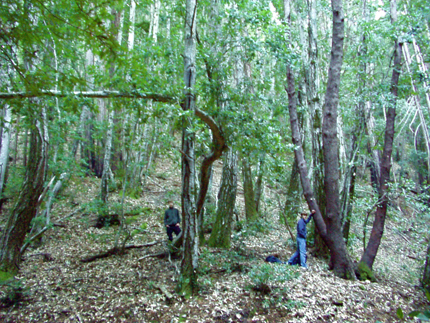
An almost pure stand forest of Tan Bark Oak. Other tree that grow in association with Tan Bark Oaks are Madrone, Bay, Toyon, Redwood, and other California Oaks.
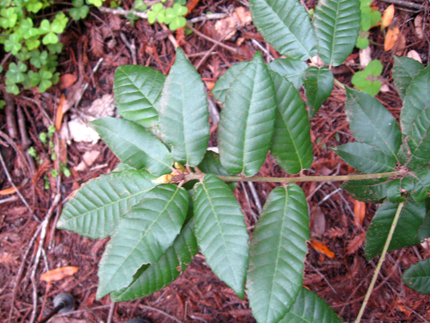
The parallel lines of veins in the leaves are the most distinctive way to distinguish the Tan Oak.
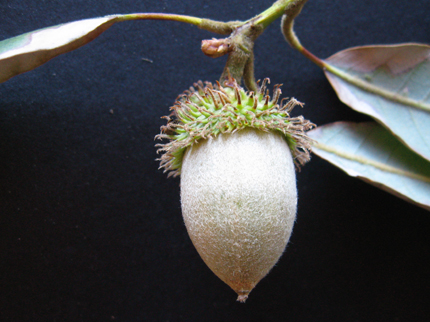
The large fat acorn with is unique hairy cap is 3/4 to 1-1/4 inches long.
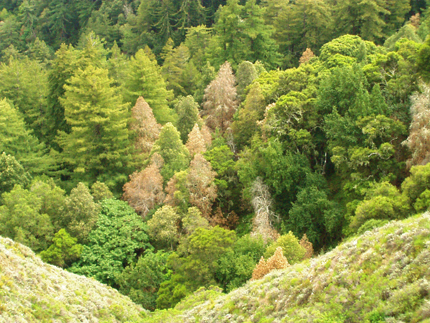
In this photo all the brown trees are dead Tan Oaks mixed with healthy Redwood, Bay, Coast Live Oak, and Interior Live Oak. In the Santa Lucia Mountains some Tan Oak forests have experienced almost 100% death rate from SODS.
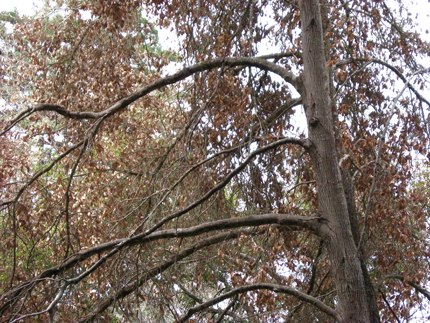
A Tan Oak "dead and red" as forest fighters call them. A tree infected with SODS (Sudden Oak Death Syndrome) can go from green to all the leaves brown within a month.